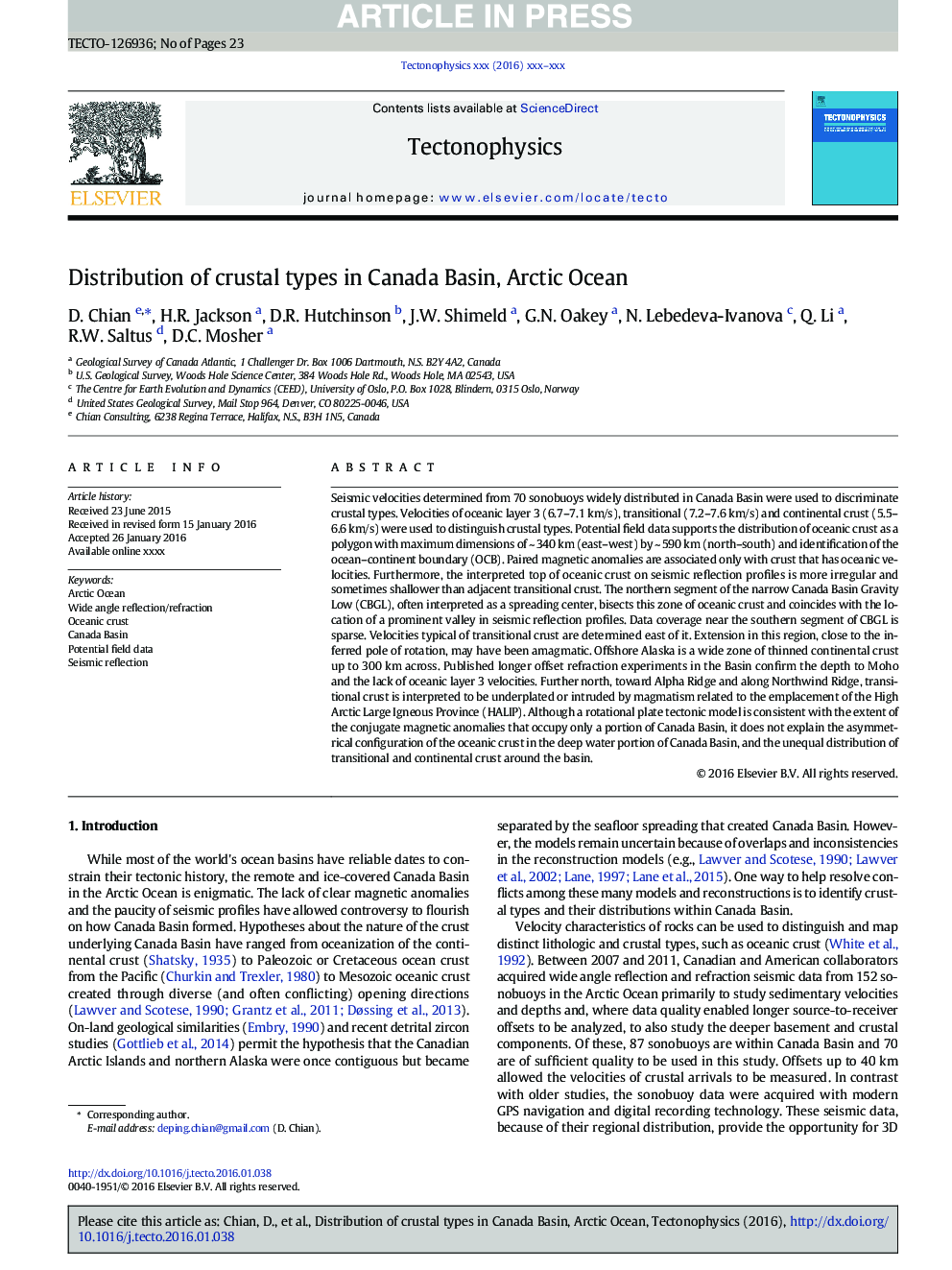| کد مقاله | کد نشریه | سال انتشار | مقاله انگلیسی | نسخه تمام متن |
|---|---|---|---|---|
| 5781784 | 1413899 | 2016 | 23 صفحه PDF | دانلود رایگان |
عنوان انگلیسی مقاله ISI
Distribution of crustal types in Canada Basin, Arctic Ocean
ترجمه فارسی عنوان
توزیع انواع پوسته در حوضه کانادا، اقیانوس اطلس
دانلود مقاله + سفارش ترجمه
دانلود مقاله ISI انگلیسی
رایگان برای ایرانیان
کلمات کلیدی
اقیانوس قطب شمال، بازتاب / بازتاب زاویه گسترده پوسته اقیانوسی، حوضه کانادا، اطلاعات میدان های بالقوه، انعکاس لرزه ای،
موضوعات مرتبط
مهندسی و علوم پایه
علوم زمین و سیارات
فرآیندهای سطح زمین
چکیده انگلیسی
Seismic velocities determined from 70 sonobuoys widely distributed in Canada Basin were used to discriminate crustal types. Velocities of oceanic layer 3 (6.7-7.1Â km/s), transitional (7.2-7.6Â km/s) and continental crust (5.5-6.6Â km/s) were used to distinguish crustal types. Potential field data supports the distribution of oceanic crust as a polygon with maximum dimensions of ~Â 340Â km (east-west) by ~Â 590Â km (north-south) and identification of the ocean-continent boundary (OCB). Paired magnetic anomalies are associated only with crust that has oceanic velocities. Furthermore, the interpreted top of oceanic crust on seismic reflection profiles is more irregular and sometimes shallower than adjacent transitional crust. The northern segment of the narrow Canada Basin Gravity Low (CBGL), often interpreted as a spreading center, bisects this zone of oceanic crust and coincides with the location of a prominent valley in seismic reflection profiles. Data coverage near the southern segment of CBGL is sparse. Velocities typical of transitional crust are determined east of it. Extension in this region, close to the inferred pole of rotation, may have been amagmatic. Offshore Alaska is a wide zone of thinned continental crust up to 300Â km across. Published longer offset refraction experiments in the Basin confirm the depth to Moho and the lack of oceanic layer 3 velocities. Further north, toward Alpha Ridge and along Northwind Ridge, transitional crust is interpreted to be underplated or intruded by magmatism related to the emplacement of the High Arctic Large Igneous Province (HALIP). Although a rotational plate tectonic model is consistent with the extent of the conjugate magnetic anomalies that occupy only a portion of Canada Basin, it does not explain the asymmetrical configuration of the oceanic crust in the deep water portion of Canada Basin, and the unequal distribution of transitional and continental crust around the basin.
ناشر
Database: Elsevier - ScienceDirect (ساینس دایرکت)
Journal: Tectonophysics - Volume 691, Part A, 22 November 2016, Pages 8-30
Journal: Tectonophysics - Volume 691, Part A, 22 November 2016, Pages 8-30
نویسندگان
D. Chian, H.R. Jackson, D.R. Hutchinson, J.W. Shimeld, G.N. Oakey, N. Lebedeva-Ivanova, Q. Li, R.W. Saltus, D.C. Mosher,
